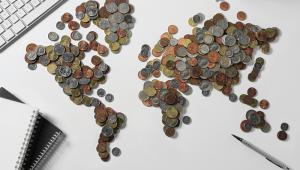
The quarterly announcement of GDP ranks as one of the great rituals of modern economic and political life.
It is eagerly anticipated by politicians and the public, along with economists, financial analysts, fund managers and the media. If GDP rises, the government breathes a sigh of relief. Consistent falls can potentially be terminal for whoever is in power.
A paper drawn up by officials from the Department for International Trade confirms that the UK government wants to pull every lever to boost commercial economic activity — and, therefore, GDP.
Others have turned to the Keynesian playbook. John Maynard Keynes recommended a boost to government investment during the Great Depression of the 1930s. The ambition remains to invest in big, capital-intensive projects to create jobs and boost GDP during economic downturns.
But Keynes’ formula did not anticipate the catastrophic consequences of unchecked industrial development. Economic recovery must be genuinely greener if climate change, biodiversity loss and future pandemics are to be avoided. Luckily, a solution exists.
The GDP formula is not a black box. It has rules – set through the United Nations System of National Accounts, an intergovernmental body of the world’s national statisticians. In a once-in-a-generation process, fortuitously, the SNA’s members are currently preparing the next revision to what goes into GDP.
National statisticians are about to start consulting with stakeholders – including businesses, government departments and academics – on changing the formula to better reflect what needs to be measured. For the first time, the rule-setters have agreed to consider how GDP could better take account of the environment.
For the first time, the rule-setters have agreed to consider how GDP could better take account of the environment
If they can agree a way forward, this will compel governments to think twice before implementing environmentally harmful policies.
But there are some big hurdles. The SNA process is barely known – aside from green parties, most policy-makers do not realise GDP’s power to do harm or good.
At the same time, calls to get rid of GDP entirely grow louder, led by academics who point out – accurately – that the world’s economies are run like a car with one instrument, as Nobel laureate economist Amartya Sen observed.
But change needs to be inclusive, and, ideally, needs to follow a multilateral process – nations working in concert.
And that is what the SNA process already provides. It is necessarily slow and technical.
At the same time, it is a global conversation mediated by the UN – just like the climate talks between world leaders in Glasgow at November’s COP26 Climate Change Conference.
In contrast to previous conferences, there are few world leaders today who doubt that the planet is on a path to dangerous climate change.
But their fixation with economic growth through GDP will effectively blunt any promises they make towards green economic development. That is because every new promise will be up against hundreds – if not thousands – of projects labelled ‘unsustainable development’.
Governments must either abandon the formula – which is not looking likely – or they must cooperate to change it.
That is what the SNA process is all about. It is a route for all countries, rich and poor, to have an equal stake in deciding how economies should measure what matters.













